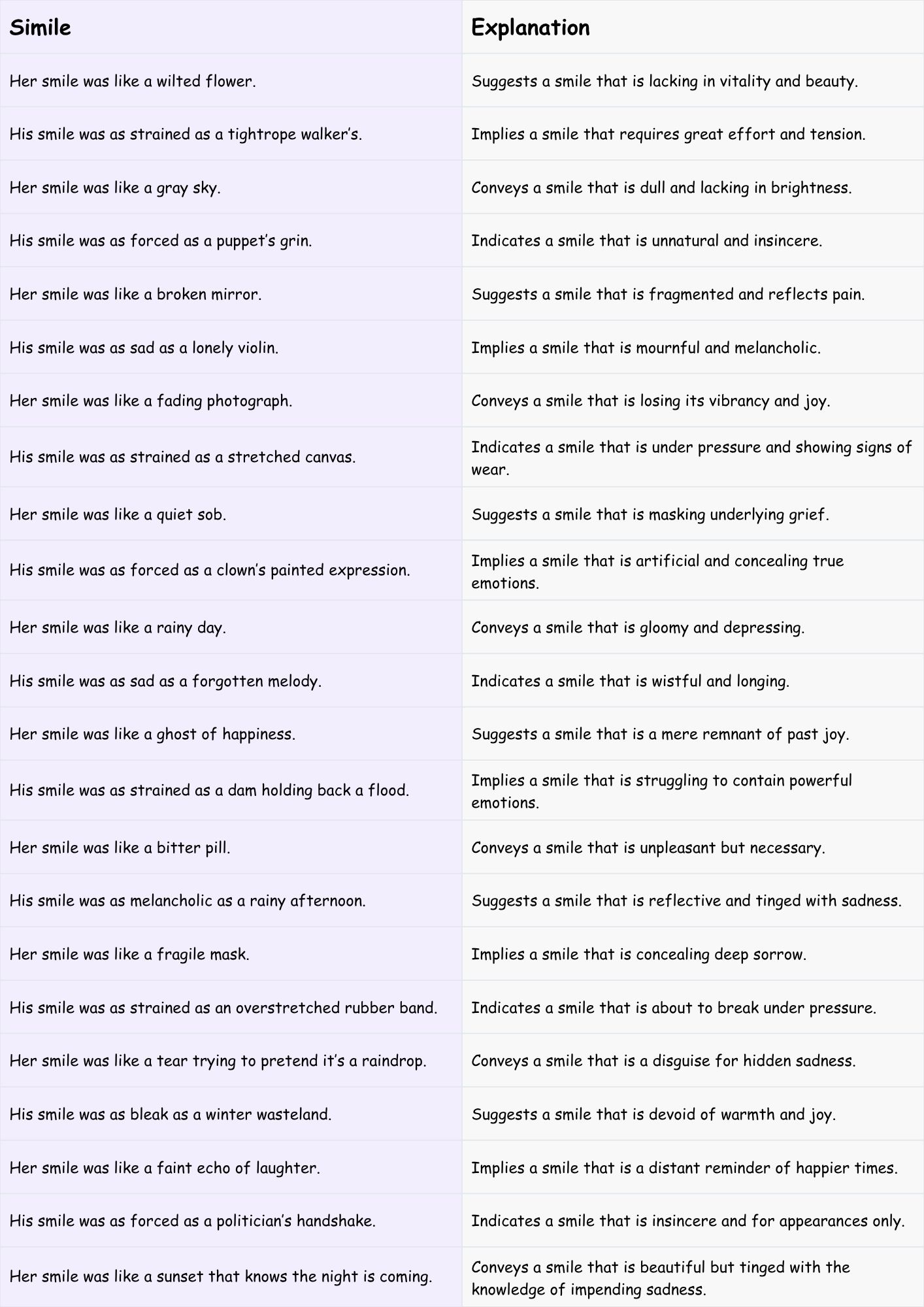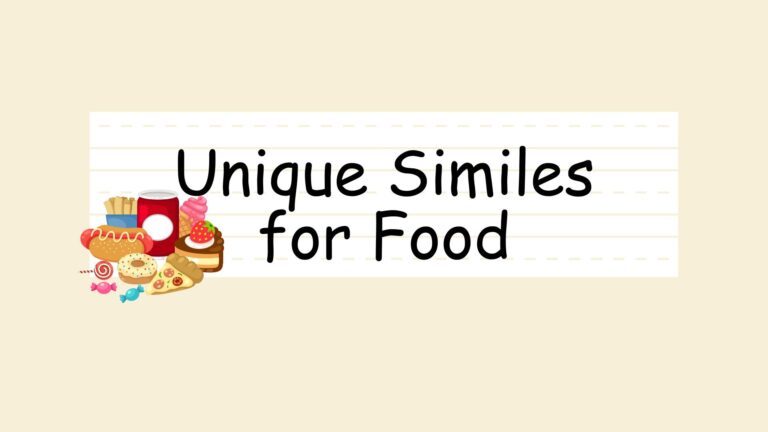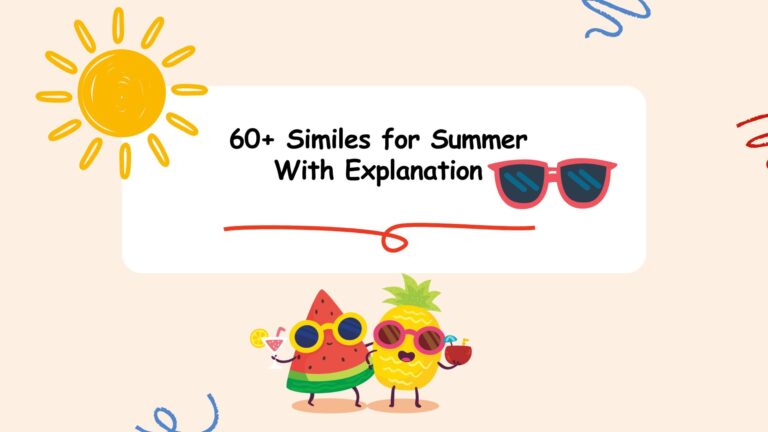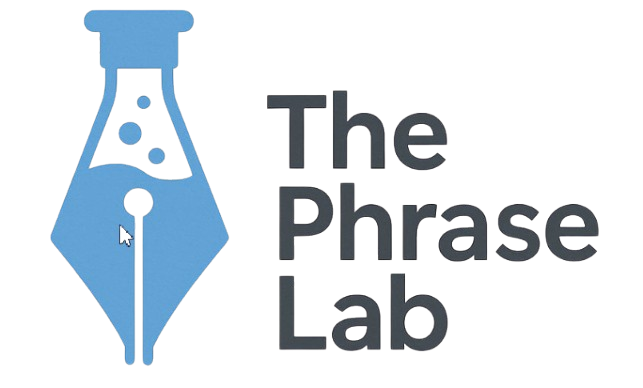
Similes for Smile: Enhancing Your English Expression
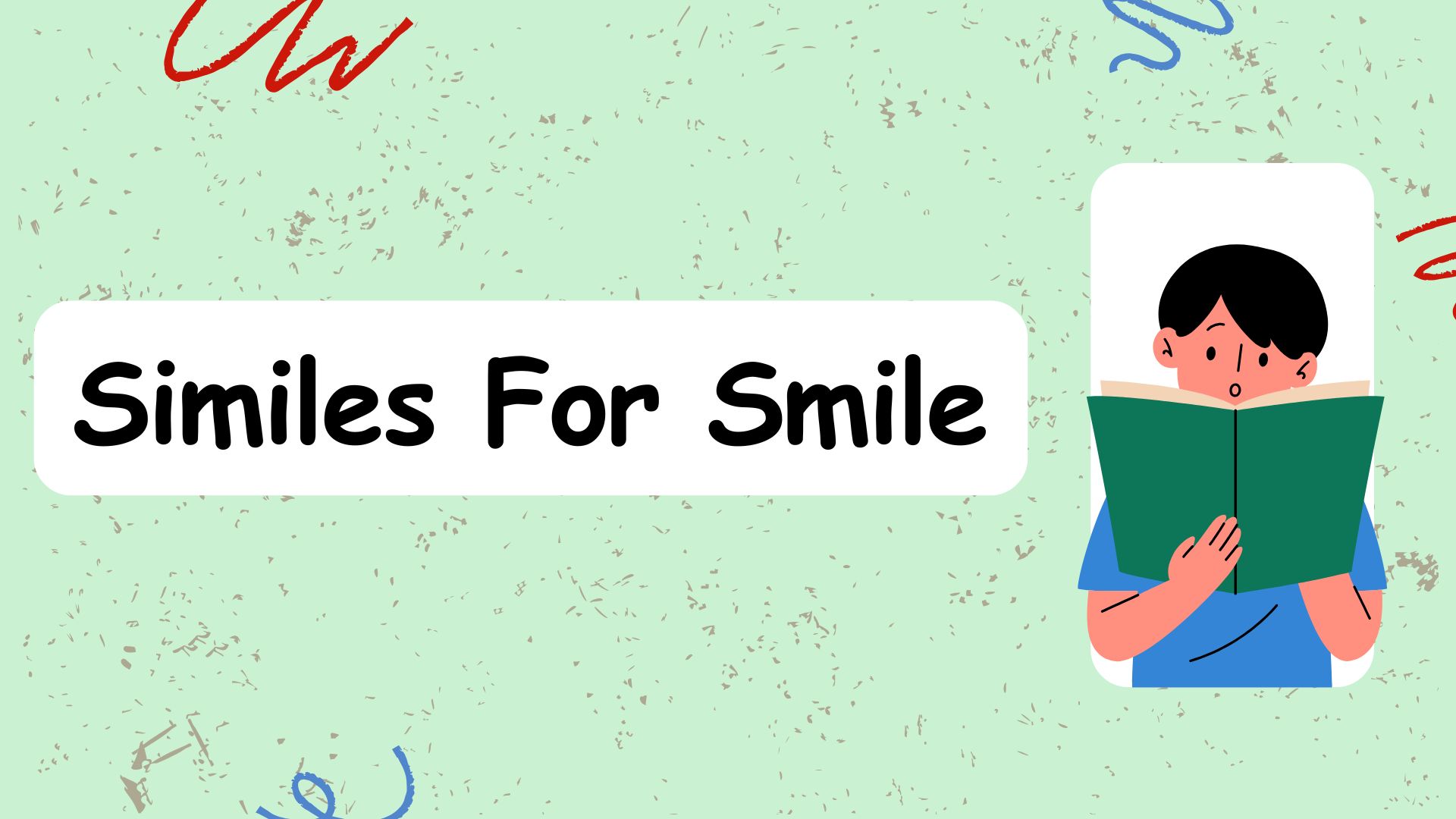
The English language is rich with figurative language, and similes are a powerful tool for adding color, depth, and vividness to your writing and speech. This article focuses specifically on similes used to describe a smile, exploring various ways to make your descriptions more engaging and impactful. Understanding and using these similes effectively can significantly enhance your communication skills, allowing you to convey emotions and imagery with greater precision and creativity. This guide is useful for English language learners, writers, and anyone looking to improve their descriptive abilities.
Table of Contents
- Introduction
- Definition of a Simile
- Structural Breakdown of Similes
- Types of Similes for Smiles
- Examples of Similes for Smiles
- Usage Rules for Similes
- Common Mistakes When Using Similes
- Practice Exercises
- Advanced Topics: Nuances and Subtleties
- Frequently Asked Questions
- Conclusion
Definition of a Simile
A simile is a figure of speech that compares two unlike things using the words “like” or “as.” It’s a way to create a vivid image in the reader’s mind by drawing a comparison between something familiar and something you’re trying to describe. In essence, a simile illuminates one thing by associating it with another. Similes add depth and color to your writing, making it more engaging and memorable. They are crucial for effective descriptive writing and enhancing the overall impact of your message.
Similes differ from metaphors, which state that one thing *is* another. While similes use “like” or “as” to suggest a resemblance, metaphors directly equate two unlike entities. For example, “Her smile was like sunshine” is a simile, while “Her smile was sunshine” is a metaphor. Both are figurative language devices, but they function in subtly different ways.
The main function of a simile is to provide clarity and vividness to your descriptions. By comparing something abstract or unfamiliar to something concrete and well-known, you can make it easier for your audience to understand and visualize what you’re trying to convey. This makes similes an invaluable tool for writers, speakers, and anyone who wants to communicate more effectively.
Structural Breakdown of Similes
The basic structure of a simile is quite simple, involving three key components: the subject being described, the comparing word (“like” or “as”), and the object of comparison. Understanding this structure is essential for crafting effective and meaningful similes.
The structure typically follows this pattern: Subject + Linking Verb + “Like” or “As” + Object of Comparison. For instance, in the simile “Her smile was like a blooming rose,” “Her smile” is the subject, “was” is the linking verb, “like” is the comparing word, and “a blooming rose” is the object of comparison. This simple structure allows for a wide range of creative expression.
The subject is the thing you are describing. The linking verb (usually a form of “to be,” such as “is,” “was,” “were,” or “seems”) connects the subject to the comparison. The comparing word (“like” or “as”) signals that a comparison is being made. The object of comparison is the thing to which the subject is being likened. Each of these elements plays a crucial role in creating a clear and evocative simile.
Let’s break down a few more examples:
- “His smile was as bright as the morning sun.” Subject: His smile; Linking Verb: was; Comparing Word: as; Object of Comparison: the morning sun.
- “Her smile is like a gentle breeze.” Subject: Her smile; Linking Verb: is; Comparing Word: like; Object of Comparison: a gentle breeze.
- “The child’s smile seemed like a ray of hope.” Subject: The child’s smile; Linking Verb: seemed; Comparing Word: like; Object of Comparison: a ray of hope.
Types of Similes for Smiles
Similes for smiles can be categorized based on the emotion or characteristic they aim to convey. Here are some common types:
Similes Describing Brightness and Radiance
These similes emphasize the luminosity and brilliance of a smile, often comparing it to sources of light or objects known for their shine.
Similes Describing Warmth and Gentleness
These similes focus on the comforting and soothing aspects of a smile, drawing comparisons to things that evoke feelings of tenderness and care.
Similes Describing Shyness and Hesitation
These similes capture the subtle and tentative nature of a shy smile, often comparing it to fleeting or delicate things.
Similes Describing Mischief and Playfulness
These similes highlight the mischievous or playful quality of a smile, often comparing it to actions or expressions that suggest a lighthearted and teasing nature.
Similes Describing Sadness and Melancholy
These similes convey the underlying sadness or sorrow behind a smile, often comparing it to things that evoke feelings of grief or regret.
Examples of Similes for Smiles
Here are several examples of similes for smiles, categorized by the type of emotion or characteristic they convey. Each category includes a table with multiple examples to illustrate the diverse ways you can describe a smile using similes.
Bright and Radiant Smiles
These similes describe smiles that are luminous, dazzling, and full of life, bringing to mind images of sunlight, stars, and other brilliant objects. The following table provides various examples of similes used to describe bright and radiant smiles.
| Simile | Explanation |
|---|---|
| Her smile was like the morning sun. | Suggests a smile that is warm, inviting, and heralds a good day. |
| His smile was as bright as a supernova. | Implies an exceptionally radiant and explosive smile. |
| Her smile shone like a beacon in the night. | Conveys a smile that provides hope and guidance. |
| His smile sparkled like a diamond. | Indicates a smile that is precious and brilliant. |
| Her smile was like a flash of lightning. | Suggests a sudden and striking smile. |
| His smile radiated like a thousand stars. | Implies a smile that is immensely bright and captivating. |
| Her smile was as luminous as a full moon. | Conveys a gentle yet powerful radiance. |
| His smile gleamed like polished gold. | Indicates a smile that is valuable and refined. |
| Her smile lit up the room like a chandelier. | Suggests a smile that brings joy and illumination. |
| His smile was like a burst of fireworks. | Implies a smile that is celebratory and exhilarating. |
| Her smile was as radiant as a sunrise. | Conveys a smile that is fresh, hopeful, and full of promise. |
| His smile sparkled like freshly fallen snow. | Indicates a smile that is pure and brilliant. |
| Her smile shone like a polished mirror. | Suggests a smile that is reflective and captivating. |
| His smile was like a beam of sunshine. | Implies a smile that is warm, cheerful, and comforting. |
| Her smile was as bright as a spotlight. | Conveys a smile that draws attention and admiration. |
| His smile shone like a lighthouse in the fog. | Suggests a smile that offers guidance and clarity in confusing times. |
| Her smile was as brilliant as a rainbow after the rain. | Implies a smile that brings joy and hope after a difficult period. |
| His smile radiated like a high-wattage bulb. | Indicates a smile that is intensely bright and energetic. |
| Her smile was like a sudden burst of sunlight through the clouds. | Conveys a smile that is unexpected and uplifting. |
| His smile was as dazzling as a disco ball. | Suggests a smile that is flashy and full of energy. |
| Her smile was like the first star in the evening sky. | Implies a smile that is gentle yet captivating, marking the beginning of something beautiful. |
| His smile sparkled like champagne bubbles. | Indicates a smile that is celebratory, effervescent, and full of joy. |
| Her smile was as radiant as a field of sunflowers. | Conveys a smile that is bright, cheerful, and full of life. |
Warm and Gentle Smiles
These similes describe smiles that are comforting, inviting, and full of kindness, bringing to mind images of gentle breezes, soft blankets, and other soothing things. The table below provides various examples of similes used to describe warm and gentle smiles.
| Simile | Explanation |
|---|---|
| Her smile was like a gentle breeze. | Suggests a smile that is soft, comforting, and refreshing. |
| His smile was as warm as a summer day. | Implies a smile that is inviting and pleasant. |
| Her smile was like a soft blanket on a cold night. | Conveys a smile that provides comfort and security. |
| His smile was as soothing as a lullaby. | Indicates a smile that is calming and peaceful. |
| Her smile was like a cup of hot cocoa on a winter evening. | Suggests a smile that is comforting and warming. |
| His smile was as gentle as a lamb. | Implies a smile that is innocent and kind. |
| Her smile was like a warm embrace. | Conveys a smile that is affectionate and welcoming. |
| His smile was as tender as a mother’s touch. | Indicates a smile that is caring and nurturing. |
| Her smile was like sunshine after a rain. | Suggests a smile that brings hope and joy after a difficult time. |
| His smile was as comforting as a crackling fire. | Implies a smile that provides warmth and security. |
| Her smile was like a gentle stream. | Conveys a smile that is calming and peaceful. |
| His smile was as warm as freshly baked bread. | Indicates a smile that is inviting and comforting. |
| Her smile was like a soft melody. | Suggests a smile that is pleasant and harmonious. |
| His smile was as gentle as a feather. | Implies a smile that is light and delicate. |
| Her smile was like a quiet whisper of encouragement. | Conveys a smile that is supportive and reassuring. |
| His smile was as warm as a shared secret. | Suggests a smile that is intimate and comforting. |
| Her smile was like the first bloom of spring. | Implies a smile that is fresh, hopeful, and full of life. |
| His smile was as soothing as the sound of rain on a tin roof. | Indicates a smile that is calming and peaceful. |
| Her smile was like a comforting hand on your shoulder. | Conveys a smile that is supportive and understanding. |
| His smile was as gentle as a butterfly’s wing. | Suggests a smile that is delicate and graceful. |
| Her smile was like a warm cup of tea on a foggy morning. | Implies a smile that is comforting, inviting, and starts the day right. |
| His smile was as tender as a first kiss. | Indicates a smile that is affectionate, gentle, and memorable. |
| Her smile was like a heartfelt hug. | Conveys a smile that is warm, embracing, and full of genuine care. |
Shy and Hesitant Smiles
These similes describe smiles that are subtle, tentative, and often fleeting, bringing to mind images of delicate flowers, shy animals, and other things that evoke a sense of timidity. The following table provides various examples of similes used to describe shy and hesitant smiles.
| Simile | Explanation |
|---|---|
| Her smile was like a hesitant butterfly. | Suggests a smile that is delicate, fleeting, and uncertain. |
| His smile was as shy as a blooming violet. | Implies a smile that is subtle and hidden. |
| Her smile was like a secret wish. | Conveys a smile that is precious and carefully guarded. |
| His smile was as tentative as a first step. | Indicates a smile that is uncertain and cautious. |
| Her smile was like a fragile flower opening. | Suggests a smile that is delicate and slowly revealing itself. |
| His smile was as shy as a fawn in the forest. | Implies a smile that is timid and easily startled. |
| Her smile was like a fleeting shadow. | Conveys a smile that is brief and quickly disappears. |
| His smile was as hesitant as a whispered hello. | Indicates a smile that is quiet and uncertain. |
| Her smile was like a hidden treasure. | Suggests a smile that is rare and valuable. |
| His smile was as tentative as a raindrop on a leaf. | Implies a smile that is delicate and temporary. |
| Her smile was like a shy moon peeking through clouds. | Conveys a smile that is partially concealed and mysterious. |
| His smile was as hesitant as a bird learning to fly. | Indicates a smile that is uncertain and experimental. |
| Her smile was like a delicate snowflake. | Suggests a smile that is unique and fragile. |
| His smile was as shy as a child hiding behind their mother. | Implies a smile that is timid and seeking reassurance. |
| Her smile was like a whispered confession. | Conveys a smile that is vulnerable and intimate. |
| His smile was as tentative as a painter’s first brushstroke. | Suggests a smile that is careful and exploratory. |
| Her smile was like a glimmer of hope in the dark. | Implies a smile that is subtle yet significant. |
| His smile was as shy as a firefly’s light. | Indicates a smile that is brief and enchanting. |
| Her smile was like a soft, almost imperceptible blush. | Conveys a smile that is delicate and barely noticeable. |
| His smile was as hesitant as a writer’s first word on a blank page. | Suggests a smile that is cautious and full of potential. |
| Her smile was like a rare orchid blooming in the shade. | Implies a smile that is beautiful, delicate, and hidden from view. |
| His smile was as tentative as a dancer’s first step on stage. | Indicates a smile that is uncertain yet full of anticipation. |
| Her smile was like a quiet promise whispered in the wind. | Conveys a smile that is subtle, meaningful, and filled with potential. |
Mischievous and Playful Smiles
These similes describe smiles that are teasing, impish, and full of fun, bringing to mind images of playful animals, pranks, and other lighthearted things. The table below provides various examples of similes used to describe mischievous and playful smiles.
| Simile | Explanation |
|---|---|
| His smile was like a mischievous grin on a cartoon cat. | Suggests a smile that is playful and hinting at a prank. |
| Her smile was as impish as a pixie’s giggle. | Implies a smile that is lighthearted and slightly naughty. |
| His smile was like a secret joke. | Conveys a smile that is shared and full of amusement. |
| Her smile was as playful as a puppy’s wagging tail. | Indicates a smile that is energetic and joyful. |
| His smile was like a wink in disguise. | Suggests a smile that is teasing and suggestive. |
| Her smile was as mischievous as a squirrel stealing a nut. | Implies a smile that is sly and opportunistic. |
| His smile was like a playful nudge. | Conveys a smile that is teasing and encouraging. |
| Her smile was as impish as a leprechaun’s dance. | Indicates a smile that is spirited and full of tricks. |
| His smile was like a game of hide-and-seek. | Suggests a smile that is teasing and engaging. |
| Her smile was as playful as a dolphin jumping in the waves. | Implies a smile that is lively and full of energy. |
| His smile was like a secret handshake. | Conveys a smile that is shared and exclusive. |
| Her smile was as mischievous as a child with a mud pie. | Indicates a smile that is playful and messy. |
| His smile was like a tickle fight waiting to happen. | Suggests a smile that is teasing and exciting. |
| Her smile was as playful as a kitten chasing a laser pointer. | Implies a smile that is animated and full of fun. |
| His smile was like a dare. | Conveys a smile that is challenging and tempting. |
| Her smile was as mischievous as a gremlin’s plot. | Suggests a smile that is cleverly devious. |
| His smile was like a wink across a crowded room. | Implies a smile that is flirtatious and secretive. |
| Her smile was as playful as a summer breeze rustling through leaves. | Indicates a smile that is light, refreshing, and full of life. |
| His smile was like a well-crafted practical joke. | Conveys a smile that is humorous and cleverly executed. |
| Her smile was as mischievous as a pirate’s treasure map. | Suggests a smile that hints at adventure and hidden secrets. |
| His smile was like a playful jab that doesn’t hurt. | Implies a smile that is teasing but ultimately harmless and affectionate. |
| Her smile was as impish as a sprite dancing in the moonlight. | Indicates a smile that is magical, enchanting, and full of playful energy. |
| His smile was like a mischievous imp tempting you to break the rules. | Conveys a smile that is alluring, slightly forbidden, and full of playful challenge. |
Sad and Melancholy Smiles
These similes describe smiles that are strained, forced, or tinged with sadness, bringing to mind images of wilted flowers, gray skies, and other things that evoke a sense of sorrow. The table below provides various examples of similes used to describe sad and melancholy smiles.
| Simile | Explanation |
|---|---|
| Her smile was like a wilted flower. | Suggests a smile that is lacking in vitality and beauty. |
| His smile was as strained as a tightrope walker’s. | Implies a smile that requires great effort and tension. |
| Her smile was like a gray sky. | Conveys a smile that is dull and lacking in brightness. |
| His smile was as forced as a puppet’s grin. | Indicates a smile that is unnatural and insincere. |
| Her smile was like a broken mirror. | Suggests a smile that is fragmented and reflects pain. |
| His smile was as sad as a lonely violin. | Implies a smile that is mournful and melancholic. |
| Her smile was like a fading photograph. | Conveys a smile that is losing its vibrancy and joy. |
| His smile was as strained as a stretched canvas. | Indicates a smile that is under pressure and showing signs of wear. |
| Her smile was like a quiet sob. | Suggests a smile that is masking underlying grief. |
| His smile was as forced as a clown’s painted expression. | Implies a smile that is artificial and concealing true emotions. |
| Her smile was like a rainy day. | Conveys a smile that is gloomy and depressing. |
| His smile was as sad as a forgotten melody. | Indicates a smile that is wistful and longing. |
| Her smile was like a ghost of happiness. | Suggests a smile that is a mere remnant of past joy. |
| His smile was as strained as a dam holding back a flood. | Implies a smile that is struggling to contain powerful emotions. |
| Her smile was like a bitter pill. | Conveys a smile that is unpleasant but necessary. |
| His smile was as melancholic as a rainy afternoon. | Suggests a smile that is reflective and tinged with sadness. |
| Her smile was like a fragile mask. | Implies a smile that is concealing deep sorrow. |
| His smile was as strained as an overstretched rubber band. | Indicates a smile that is about to break under pressure. |
| Her smile was like a tear trying to pretend it’s a raindrop. | Conveys a smile that is a disguise for hidden sadness. |
| His smile was as bleak as a winter wasteland. | Suggests a smile that is devoid of warmth and joy. |
| Her smile was like a faint echo of laughter. | Implies a smile that is a distant reminder of happier times. |
| His smile was as forced as a politician’s handshake. | Indicates a smile that is insincere and for appearances only. |
| Her smile was like a sunset that knows the night is coming. | Conveys a smile that is beautiful but tinged with the knowledge of impending sadness. |
Usage Rules for Similes
While similes are a fantastic tool for enriching your language, it’s essential to use them correctly to avoid clichés or confusing comparisons. Here are some key usage rules to keep in mind:
- Ensure Clarity: The comparison should be clear and easily understood by your audience. Avoid obscure or overly complex references.
- Avoid Clichés: Steer clear of overused similes like “as busy as a bee” or “as strong as an ox.” Aim for originality.
- Maintain Relevance: The object of comparison should be relevant to the subject being described. The connection should make sense and enhance the description.
- Use Sparingly: Overusing similes can make your writing feel forced and unnatural. Use them judiciously to create the greatest impact.
- Consider Context: The appropriateness of a simile depends on the context of your writing or speech. A simile that works well in a poem might not be suitable for a business report.
For example, instead of using the cliché “Her smile was as bright as the sun,” try something more original like “Her smile was like a burst of fireworks on a summer night.” This is more vivid and engaging.
Common Mistakes When Using Similes
Even experienced writers sometimes make mistakes when using similes. Here are some common errors to watch out for:
| Incorrect | Correct | Explanation |
|---|---|---|
| Her smile was like happiness. | Her smile was like a ray of sunshine. | The comparison should be more specific and concrete. |
| His smile was as smile as hers. | His smile was as radiant as hers. | The comparison should focus on a specific attribute. |
| Her smile was like a thing. | Her smile was like a blooming rose. | The comparison should be a recognizable image or object. |
| His smile was like as a sun. | His smile was like the sun. | Avoid using “as” and “like” together. |
Avoiding these common mistakes will help you use similes more effectively and enhance the quality of your writing.
Practice Exercises
Test your understanding of similes with these practice exercises. Try to create your own similes to describe a smile based on the given prompts.
Exercise 1: Identify the Simile
For each sentence, identify the simile used.
| Question | Answer |
|---|---|
| 1. Her smile was like a warm blanket on a cold day. | like a warm blanket on a cold day |
| 2. His smile was as bright as the morning sun. | as bright as the morning sun |
| 3. Her smile shone like a beacon in the night. | like a beacon in the night |
| 4. His smile was as gentle as a lamb. | as gentle as a lamb |
| 5. Her smile was like a secret wish. | like a secret wish |
| 6. His smile was as mischievous as a pixie’s giggle. | as mischievous as a pixie’s giggle |
| 7. Her smile was like a wilted flower. | like a wilted flower |
| 8. His smile was as strained as a tightrope walker’s. | as strained as a tightrope walker’s |
| 9. Her smile was like a quiet sob. | like a quiet sob |
| 10. His smile was as forced as a puppet’s grin. | as forced as a puppet’s grin |
Exercise 2: Complete the Simile
Complete the following similes to describe a smile.
| Question | Answer |
|---|---|
| 1. Her smile was like __________. | Her smile was like a blooming rose. |
| 2. His smile was as __________ as the summer sky. | His smile was as blue as the summer sky. |
| 3. Her smile shone like __________. | Her smile shone like a diamond. |
| 4. His smile was as __________ as a baby’s laugh. | His smile was as pure as a baby’s laugh. |
| 5. Her smile was like __________. | Her smile was like a gentle breeze. |
| 6. His smile was as __________ as a playful puppy. | His smile was as energetic as a playful puppy. |
| 7. Her smile was like __________. | Her smile was like a fading memory. |
| 8. His smile was as __________ as a strained muscle. | His smile was as tense as a strained muscle. |
| 9. Her smile was like __________. | Her smile was like a hidden secret. |
| 10. His smile was as __________ as a mischievous imp. | His smile was as crafty as a mischievous imp. |
Exercise 3: Create Your Own Simile
Create your own simile to describe the following types of smiles.
- A radiant smile
- A warm smile
- A shy smile
- A mischievous smile
- A sad smile
Possible answers:
- A radiant smile: Her smile was like a supernova, illuminating everything around her.
- A warm smile: His smile was like a comforting fire on a cold winter night.
- A shy smile: Her smile was like a delicate flower, barely opening its petals.
- A mischievous smile: His smile was like a playful cat, hinting at a secret prank.
- A sad smile: Her smile was like a wilted rose, beautiful but tinged with sorrow.
Advanced Topics: Nuances and Subtleties
For advanced learners, understanding the nuances and subtleties of simile usage can elevate your writing to a higher level. Consider the following:
- Cultural Context: Similes can be culturally specific. What resonates with one audience may not resonate with another.
- Emotional Impact: Choose similes that evoke the desired emotional response in your reader.
- Sensory Details: Incorporate sensory details (sight, sound, smell, taste, touch) to make your similes more vivid and engaging.
- Originality: Strive for originality to avoid clichés and create a unique voice.
For example, instead of saying “Her smile was like a summer day,” you could say “Her smile was like a summer day, filled with the scent of blooming jasmine and the warmth of the afternoon sun.” This adds depth and sensory richness to the description.
Frequently Asked Questions
- What is the difference between a simile and a metaphor?A simile uses “like” or “as” to compare two things, while a metaphor directly equates them. For example, “Her smile was like sunshine” (simile) versus “Her smile was sunshine” (metaphor).
- Why are similes important in writing?Similes add vividness, clarity, and depth to writing, making it more engaging and memorable for the reader. They help to create a stronger connection between the writer and the audience.
- How can I avoid using clichés in my similes?Strive for originality by thinking of unique and unexpected comparisons. Use sensory details and specific images to make your similes more vivid and engaging.
- Can similes be used in all types of writing?While similes are versatile, they are most effective in creative writing, descriptive passages, and persuasive arguments. They may
not be suitable for highly technical or scientific writing where precision and literal language are essential.
Conclusion
Similes are powerful tools for enhancing your descriptive writing and making your language more engaging and vivid. By understanding the structure, types, and usage rules of similes, you can effectively use them to describe a smile in countless creative ways. Whether you’re aiming to capture the brightness, warmth, shyness, mischief, or sadness of a smile, similes provide a means to convey these emotions with depth and precision. Continue practicing and experimenting with different comparisons to master the art of simile and elevate your writing to new heights. Embrace the creativity and nuance that similes offer, and watch as your descriptions come to life, captivating your audience and leaving a lasting impression.



